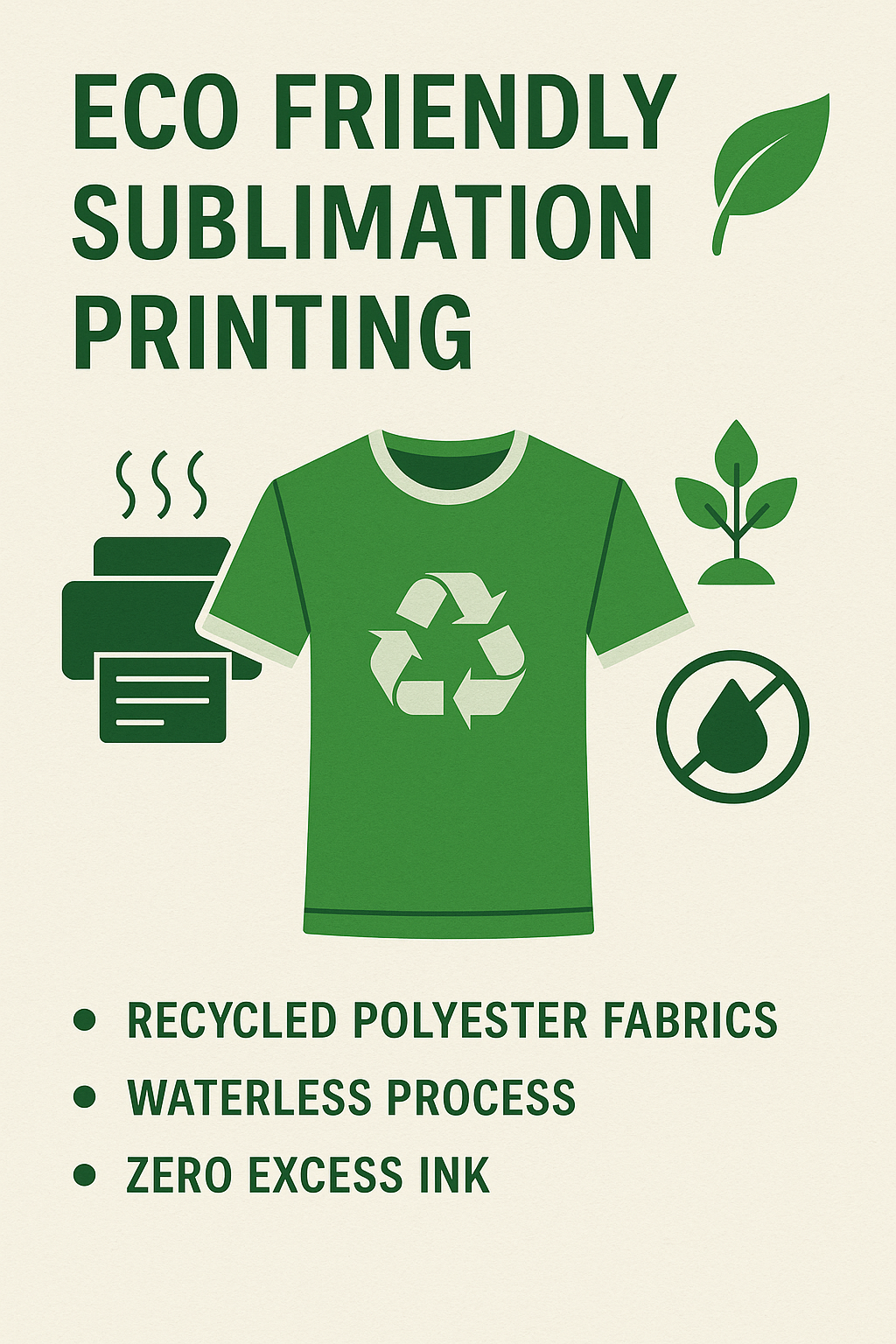Introduction
Sublimation printing has become the standard for teamwear and activewear. It allows unlimited design freedom, durable colors, and lightweight fabrics. But the traditional process has raised concerns about waste, chemicals, and environmental impact. With sustainability becoming non‑negotiable for brands and clubs in Europe and the US, eco friendly sublimation printing is now emerging as the next standard.
How Sublimation Printing Works
Sublimation transfers digital designs into polyester fabrics by turning solid ink into gas under heat and pressure. Unlike screen printing, it doesn’t add layers of ink on the surface. This creates long‑lasting prints that don’t crack or fade.
Why Sustainability Matters
The sportswear industry faces criticism for its reliance on virgin polyester and resource‑intensive production. Eco friendly sublimation tackles these issues in three ways:
- Recycled polyester fabrics — Using PET bottles and post‑consumer waste instead of new polyester.
- Waterless process — Unlike dyeing, sublimation avoids wastewater pollution.
- Zero excess ink — Digital precision eliminates leftover dye and reduces chemical use.
Benefits for Teams and Brands
- Lower environmental footprint without sacrificing performance
- Unlimited design freedom with complex patterns, gradients, and logos
- Durable and lightweight kits for athletes across football, cycling, basketball, and esports
- Marketing advantage by offering eco‑friendly uniforms to conscious consumers

Benefits for Teams and Brands
- Lower environmental footprint without sacrificing performance
- Unlimited design freedom with complex patterns, gradients, and logos
- Durable and lightweight kits for athletes across football, cycling, basketball, and esports
- Marketing advantage by offering eco‑friendly uniforms to conscious consumers
Case Insight: Sportswear of Tomorrow
At Sportswear of Tomorrow we integrate eco friendly sublimation with recycled polyester teamwear. Through our platform FLAVE, clubs and brands can design and order sustainable kits with no MOQ, reducing waste at every stage.
Conclusion
Eco friendly sublimation printing combines design freedom with sustainability. For clubs, startups, and established brands, it represents a path to high‑performance apparel that meets modern expectations of environmental responsibility.
